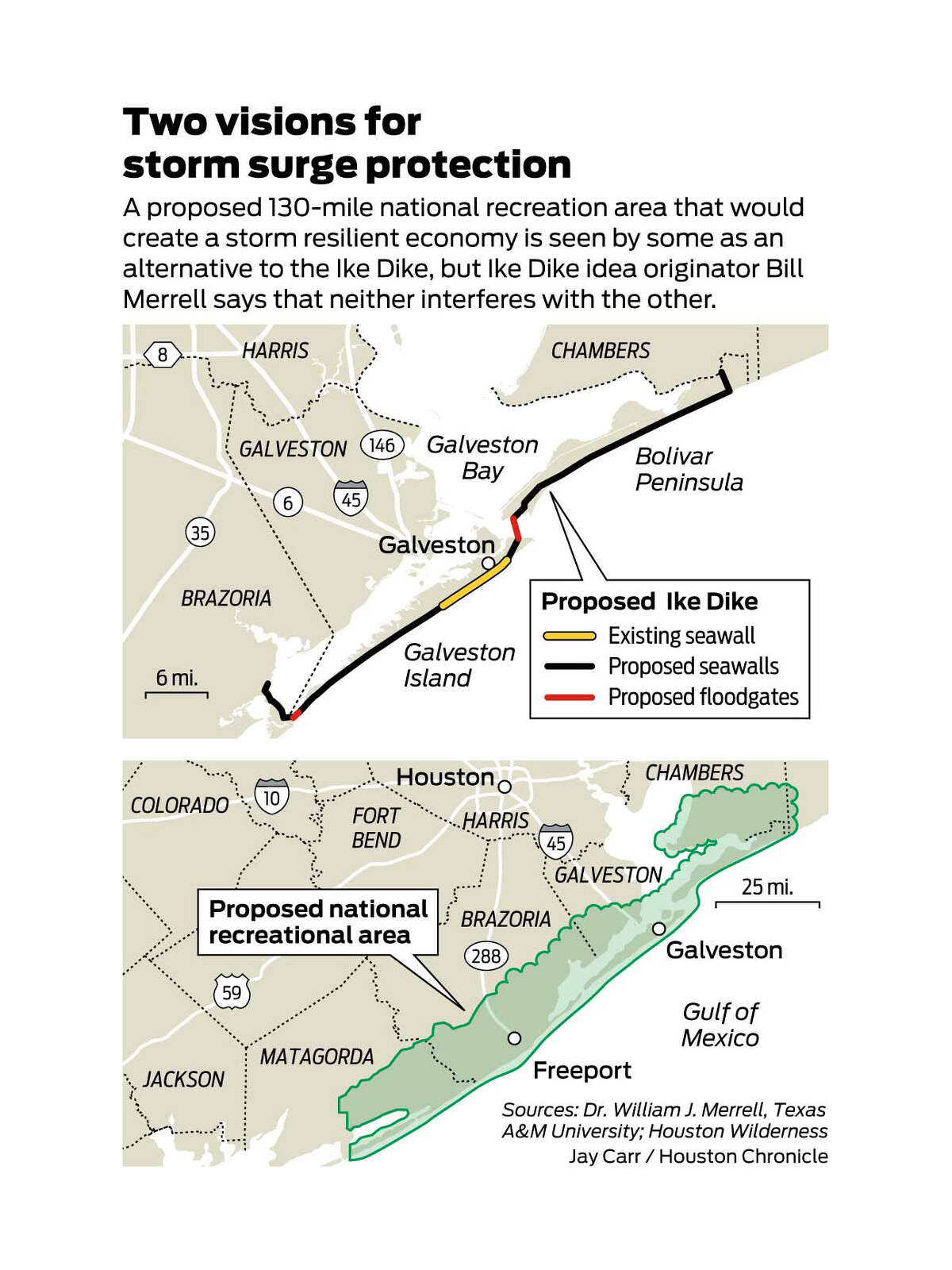It’s an academic storm surge mitigation smackdown!
Lawmakers on Monday told representatives of two of Texas’ most distinguished universities to stop feuding and come together on a plan for protecting the Houston region from a storm surge similar to the one spawned by Hurricane Ike six years ago.
At a hearing at Texas A&M University Galveston, members of the Joint Committee on a Coastal Barrier System expressed frustration that the universities who took the initiative to devise a storm protection plan – Texas A&M Galveston and a Rice University-based center – were still arguing over the best approach.
“The fact is that Hurricane Ike was six years ago and we are still talking about how to come to a consensus,” said Larry Taylor, R-Friendswood and the co-chairman of the joint committee. “We’ve got to move forward.”
Legislators said they wanted a proposal they could turn into legislation soon. “You have to come up with a plan that can be passed,” said committee Co-Chairman Joe Deshotel, D-Beaumont.
If the two sides fail to come together by the time the committee reconvenes in September, legislators said, they will take steps to bring about an agreement. “We’ll do something to encourage them,” Taylor said, adding that it could include picking a person or a committee to work out a deal.
“We have ways of making you achieve consensus,” Sen. Taylor did not say, definitely not twirling his mustache while not saying it. Sorry, got carried away for a minute there. Won’t happen again, I promise.
Texas A&M is backing a storm protection barrier proposal known as the Ike Dike, which would stretch from San Luis Pass at the western end of Galveston Island to High Island on the eastern end of the Bolivar Peninsula. Skeptics have said the idea is too costly.
Texas A&M marine scientist William Merrell proposed the concept soon after Ike caused an estimated $25 billion in damage to the Houston area, making it the costliest storm in Texas history.
The SSPEED Center, which draws on ideas from all over Texas, originated the proposal for the Centennial Gate at the head of the Houston Ship Channel. That plan calls for a ring barrier around the populated portion of Galveston Island, and a storm levee along Texas 146 to protect the western edge of Galveston Bay.
After the hearing, Jim Blackburn, a professor at the SSPEED Center, said he was confident that an agreement could be reached. But when Merrell was asked if there was a chance of a compromise, he responded, “No.”
“We’ve got a concept, we think it’s a good one and we are going to keep doing it,” Merrell said. “The Centennial Gate never did hunt.”
Merrell said he would welcome the backing of the SSPEED Center.
“Save time, see it my way,” Merrell did not say. Yeah, I know I said I wouldn’t do that again, but sometimes it’s just too easy.
See here and here for some background. I don’t know what the “right” answer is here. It’s a matter of how you calculate the risk and how much you’re willing to pay to mitigate that risk. There is such a thing as too much insurance, but there’s also such a thing as too little. What’s it worth to you? How will you pay for it? Answer those questions and you’ll answer the other one. Lisa Gray is right, that’s the Legislature’s call.

